Castor Research Station
Junagadh Agricultural University
Junagadh- 362 001 (Gujarat)
INTRODUCTION
Castor belongs to the genus Ricinus, a member of the Euphorbiaceae, which contains a vast number of plants mostly native to the tropics. The genus Ricinus is considered to be monotypic and R. communis is the only species, which includes many polymorphic types. The cultivated types are dwarf annuals. Castor plants have well developed root system with thick horizontal roots. Tap root looks like extension of the stem below the soil. The stem is erect, circular in section, partially hollow, glabrous, and smooth with good branching. Stem is either red or green or with shades of both. The stem is marked by well-defined nodes from each of which a leaf is arises. The lower internodes are shorter and their length increases with height. Leaves are alternate, large, and palmate with 5-11 lobes acuminate margins notched, serrate or indented. They are carried on long stout petioles. The inflorescence is borne terminally on the main and lateral branches. Flowers are large, in terminal sub panicled racemes, monoecious, apetalous, the upper portion of the raceme being occupied by the female flowers and the lower by male flowers The whole inflorescence may reach a length of 90 cm. The flowers are wind and insect pollinated and from 5 to 46 % natural pollination occurred. The fruit is round glaucous capsules with three projecting sides covered with tough spines or smooth, 3 loculed and three seeded. Seeds are albuminous, anatropous, broad, oval, compressed with a marked caruncle and longitudinal raphe. The testa is thin, brittle, varying in colour and mottling. Below the testa is thin legmen, covering a whitish oily endosperm containing the embryo.
The Castor Research Station established at Junagadh of Gujarat state with the objectives to breed and develop high yielding, disease and pest resistant and better quality varieties of different oilseed crops like groundnut, castor, sesame, sunflower, soybean and mustard. Currently, the centre is actively engaged in groundnut and castor research works in the main areas like,
· Plant Breeding & Genetics - Crop improvement
· Agronomy- Crop production
· Plant Protection: (a) Agril. Entomology, (b) Plant Pathology
· Plant Physiology
Junagadh Center has developed a world first Castor hybrid, GCH-3 (TSP-10R x J-1) during the year 1968
RESEARCH IN CASTOR
Mandates of research
· To evolve production technologies for newly developed and improved hybrid.
· To disseminate information generated through research to farmers through front line demonstrations.
· To develop varieties and hybrids of castor crop with high yield potential and early varieties and hybrids, better quality and disease and pest resistance.
· To solve problems regarding castor production through radio, TV programmes, popular articles, hand outs, personal discussion, night discussion and by organizing farmers' day and week end training programmes etc.
Objectives
· To develop agro technology and plant protection measures for newly released castor hybrid/variety.
· To develop varieties and hybrids of castor crop with high yield potential, early maturity better quality and disease and pest resistance.
· To develop male and female line of castor crop with high yield potential, early maturity, better quality and disease and pest resistance.
· To assess agronomic practices and plant protection measures for castor varieties / hybrids.
· Farmers participatory research through on farm front line demonstrations of castor.
Research Activities
I. Plant breeding
· Experimental works in State and AICRP trials of kharif seasons
· New crossing programme, Segregating materials and Maintenance of Inbred line
· Development and maintenance of pistillate lines
· Evaluation of hybrids/varieties in different trials
II. Agronomy
· Water, nutrient and weed management in groundnut and castor
· Intercropping studies on groundnut and castor
· Intercropping system of groundnut with castor, pearl millet, cotton and pigeon pea
III. Entomology
· Screening of groundnut entries / lines from PET, SSVT, LSVT, IVT and AVT for resistance to insect-pests in castor.
· Monitoring of insect pest in castor.
· Testing the bio-efficacy of certain insecticides and bio-pesticides in castor
IV. Plant Pathology
· Survey and Monitoring of various diseases of castor to find out the intensity and disease situation in Saurashtra region of Gujarat.
· Screening of Promising genotypes of against major diseases in castor.
· Integrated and eco-friendly management of major diseases in castor.
· Screening of castor trial entries for root rot resistance in sick plot.
INFORMATION OF UNIT HEAD
|
Name of Unit Head
|
Dr. R. B. Madariya
Research Scientist (Castor)
Ph.D. (Genetics & Plant Breeding)
|
 |
|
Office
|
(0285) 2672080-90, PBX-325
(0285) 2670205
|
|
|
Mobile
|
-
|
|
|
E-mail
|
This email address is being protected from spambots. You need JavaScript enabled to view it.
|
FACULTY INFORMATION
RESEARCH STAFF
|
No.
|
Name
|
Photos
|
Designation & Email ID
|
Qualificat-ion
|
Specialized subject
|
|
1
|
Dr. R. B. Madariya
|
 |
Associate Research Scientist
This email address is being protected from spambots. You need JavaScript enabled to view it.
|
Ph.D.
|
Genetics & Plant Breeding
|
|
2
|
Dr. V. R. Akbari
|
 |
Assistant Research Scientist This email address is being protected from spambots. You need JavaScript enabled to view it. |
Ph.D.
|
Plant Breeding & Genetics
|
|
3
|
Dr. U. M. Vyas
|
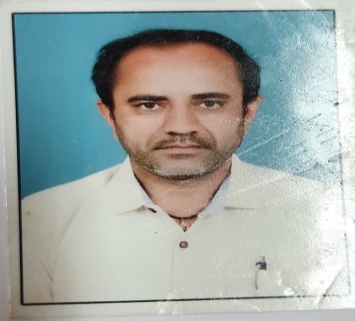 |
Assistant Research Scientist
This email address is being protected from spambots. You need JavaScript enabled to view it.
|
Ph.D.
|
Plant pathology
|
|
4
|
Dr. J. B. Bhut
|
 |
Assistant Research Scientist
This email address is being protected from spambots. You need JavaScript enabled to view it.
|
Ph.D.
|
Entomology
|
| 5 |
Shri. C. N. Jadav |
 |
Assistant Research Scientist This email address is being protected from spambots. You need JavaScript enabled to view it. |
M. Sc | Agronomy |
TECHNICAL STAFF
|
Sr. No.
|
Name
|
Designation
|
Qualification
|
Remarks
|
|
1
|
Shri M.S. Chaudhari
|
Agriculture Officer
|
M. Sc. (Pl.Physiology)
|
|
|
2
|
Shri C. J. Chaudhari
|
Agriculture Officer
|
Diploma (Agri.)
|
|
|
3
|
Shri. L.L. Limbadiya
|
Agriculture Officer
|
B. Sc. (Agri.)
|
|
|
4
|
Miss. H. R. Patel
|
Agriculture Officer
|
B. Sc. (Agri.)
|
|
|
5
|
Shri. H. S. Godhani
|
Agriculture Officer
|
B. Sc. (Agri.)
|
Pooled at Reg. Office
|
|
6
|
Shri. H. K. Lakhnotra
|
Agriculture Supervisor
|
Diploma (Agri.)
|
|
|
7
|
Shri. M. V. Virja
|
Agriculture Assistant
|
Diploma (Agri.)
|
|
|
8
|
Shri. R. P. Prajapati
|
Agriculture Assistant
|
Diploma (Agri.)
|
COURSES TEACH BY FACULTY (U.G./P.G)
|
No.
|
Name of faculty
|
Discipline
|
Title of course
|
Credit
|
|
1
|
Dr. R. B. Madariya
|
Genetics & Plant Breeding
|
GP 506: Population Genetics
|
1+1
|
|
2
|
Dr. U. M. Vyas
|
Pl. Pathology
|
Pl. Path 515 Biological control of plant disease
|
2+1
|
|
3
|
Dr. J. B. Bhut
|
Entomology
|
Ag. Ento. 3.3: Pests of field crops & stored grain & their management
|
2+1
|
|
4
|
Dr. J. B. Bhut
|
Entomology
|
Agr. Ento 4.4: Pests of horticultural crops and their management
|
2+1
|
|
5
|
Dr. J. B. Bhut
|
Entomology
|
SST.511: Seed entomology
|
2+1
|
RESEARCH PROJECTS & SCHEMES (ON GOING)
|
Sr.
No
|
Name of the Scheme
|
Budget Head
|
Type of Scheme
|
Funding Agency
|
Year of Commencement
|
|
1.
|
Project for Research in Oilseeds
|
5008
|
Non- Plan
|
State
|
1972
|
|
2.
|
National Agricultural Research Project (NARP)
|
7082/A
|
Non- Plan
|
State
|
1987
|
|
3.
|
Strengthening Research in Oilseeds
|
12008
|
Plan
|
State
|
1986
|
|
4.
|
All India Coordinated Research Project on Castor
|
2008/1C
|
I.C.A.R. Plan
|
I.C.A.R.
|
1993
|
|
5.
|
Strengthening Research in Castor
|
12584
|
Plan
|
State
|
2008
|
|
6.
|
Front line demo. (FLD)-Castor
|
2704-23
|
AICRP
|
AICRP
|
1988
|
INFRASTRUCTURE FACILITY AND MAJOR EQUIPMENT AVAILABLE
|
Farm area under cultivation
|
:
|
12.00 ha
|
|
Area under farm structure/ buildings
|
:
|
0.50 ha
|
|
Irrigated area
|
:
|
12.00 ha
|
|
Source of irrigation
|
:
|
Wells and Bor-wells
|
LABORATORIES
|
No.
|
Name of instruments
|
Qty.
|
Utility
|
|
1
|
NMR (Nuclear magnetic resonance)
|
01
|
For measurement of oil content in different crop
|
|
2
|
BOD incubator
|
01
|
For incubation, isolation of different fungi and bacteria
|
|
3
|
Hot air oven
|
01
|
|
|
4
|
Autoclave (vertical)
|
01
|
|
|
5
|
Laminar air flow
|
|
MAJOR ACHIEVMENTS
Varieties/Hybrids released
|
Improved Varieties/ Hybrids Developed by Gujarat
|
|||||
|
Variety
|
Parentage
|
Year of release
|
Oil Content (%)
|
Yield (kg/ha)
|
Important characters
|
|
GAUC-1
|
VI-1 x VI-9
|
1973
|
47.50
|
2100
|
Suitable for irrigated and rainfed region
|
|
GC-3
|
(JP-65 x JI-8) x 48.1
|
2007
|
49.60
|
2340
|
Wilt and root rot resistant
|
|
Hybrids
|
|||||
|
GCH-3
|
TSP-10R x J-1
|
1969
|
-
|
1543
|
Shattering habit
|
|
GCH-2
|
VP-1 x II-35
|
1985
|
47.80
|
1500-1700
|
Drought tolerant and resistant to root rot
|
|
GCH-6
|
JP-65 x JI-96
|
1998
|
49.90
|
2349
|
Resistant to wilt and tolerant to root rot
|
|
GCH 9
|
SKP-84 x PCS-124
|
2017
|
48.30
|
3781
|
Higher yield potential and resistant to wilt and root rot disease
|
PRODUCTION OF CASTOR PARENTAL SEED PRODUCTION (Kg.)
|
Varieties/Hybrid |
2018-19 |
2019-2020 |
2020-2021 |
2021-2022 |
2022-2023 |
|
PCH 124 (Male parent) |
70 |
292 |
150 |
50 |
310 |
RECOMMENDATION
CROP PRODUCTION
|
1
|
The farmers of South Saurashtra Agro-climate Zone are advised to sow their crop at onset of monsoon and soaking the seed in 1 % NaCl solution for three hours, to get higher seed yield and net income.
|
|
2
|
The farmers of South Saurashtra agro-climatic zone growing irrigated castor are advised to apply 75-40-00 NPK kg/ha along with two inter culturing, two hand weeding and two spray of insecticide for getting maximum yield and net return. Among the various package of practices, fertilizer application is the most critical practice followed by weeding and plant protection affecting seed yield and monetary realization.
|
|
3
|
The farmers of South Saurashtra Agro-climatic zone growing irrigated castor are recommended to apply 20 kg S/ha through gypsum (154 kg/ha) along with recommended dose (75-40 NP kg/ha) as urea and DAP or the crop should be fertilized with RDF (75-40 NP kg /ha) through urea and single super phosphate for obtaining higher yield and net return.
|
|
4
|
The farmers of South Saurashtra agro climatic zone- VII growing castor are advised to keep the crop weed free by hand weeding and interculturing. Under paucity of farm labourers, they are advised to apply pendimethalin 30 EC 1 kg/ha (67 ml/10lit.) as pre-emergence + quizalofop-ethyl 5 EC 0.05 kg/ha (20ml/10 lit. ) as post emergence (25 days after sowing) for effective weed control as well as to get higher yield and net returns.
|
|
5
|
The farmers of South Saurashtra agro climatic zone- VII growing castor are advised to keep the crop weed free by hand weeding and interculturing. Under paucity of farm labourers, they are advised to apply pendimethalin 30 EC 1 kg/ha (67 ml/10lit.) as pre-emergence + quizalofop-ethyl 5 EC 0.05 kg/ha (20ml/10 lit. ) as post emergence (25 days after sowing) for effective weed control as well as to get higher yield and net returns.
|
|
6
|
The farmers of South Saurashtra Agro-climatic Zone growing soybean are advised to adopt relay intercropping system with castor by sowing castor at 30 day after sowing of soybean with row ratio of 1:2 (castor: soybean) for securing higher yield and net return.
|
|
7
|
The farmers of South Saurashtra Agro-climatic Zone growing castor are advised to apply 40 kg P2O5/ha and treat the seeds with phosphate solubilizing microorganism (Chaetomium globosum) @ 30 g inoculants/50 g seed along with recommended dose of nitrogen (120 kg/ha) for obtaining higher seed yield and net return.
|
|
8
|
The farmers of South Saurashtra Agro-climatic Zone growing irrigated castor are advised to apply potash @ 50 kg K2O/ha (25 kg/ha as basal and 25 kg/ha at 45 days after sowing) along with recommended dose of nitrogen and phosphorus (120-50 N-P2O5 kg/ha) for obtaining higher seed yield and net returns.
|
|
9
|
The farmers of South Saurshtra Agro-climatic Zone growing castor are advised to irrigate the crop at 0.8 PEF through drip irrigation and apply nitrogen @ 90 kg/ha (20 kg N/ha as a basal and remaining 70 kg N/ha through drip in form of urea in five equal splits an interval of 12 days starting after cessation of monsoon) along with recommended dose of phosphorus (50 kg/ha) as basal for obtaining higher yield and net return. The system details 1. Lateral spacing: 120 cm. 2. Dripper spacing: 60 cm. 3. Dripper discharge rate: 4 lph.4. Operating pressure: 1.2 kg/cm2. 5. Operating frequency: Every 3rd day irrigation. Operating time October: 110-125 min., November:100-110 min., Dec.-Jan. :95-105min.
|
|
10
|
The farmers of South Saurashtra Agro- climatic Zone growing irrigated castor in soil having medium status of potash are advised to sow castor at spacing of 150 cm x 60 cm with an application of potash @ 40 kg/ ha as basal along with recommended dose of nitrogen and phosphorus (120-50kg NP/ha) for obtaining higher seed yield and net return.
|
|
11
|
The farmers of South Saurashtra Agro-climatic Zone growing irrigated castor are advised to apply PSB in soil @ 2.0 li./ha or Bio-phos 30g/50g seed alongwith recommended dose of recommended dose of fertilizers (120-40-50 kg NP2O5K2O/ha) for obtaining higher seed yield and net return.
|
CROP PROTECTION
ENTOMOLOGY
|
1
|
The farmers of South Saurashtra Region of Gujarat State growing castor crop are advised to spray cypermethrin 0.01% or methyl-o-dematon 0.025% or dimethoate 0.03% first at initiation of infestation and second after 15 days of first spray for effective and economical control of leaf miner, Liriomyza trifolii Burg.
|
|
2
|
Two sprays (first at initiation of infestation and second at 15 days after first spray) of any one of the following insecticides viz., Chlorpyriphos 0.05 % or Cypermethrin 0.015 % or Quinalphos 0.05% are recommended for the control of semilooper, Achea janata L. and leaf eating caterpillar, Spodoptera litura (Fab.) in castor crop grown under South Saurashtra region.
|
|
3
|
For effective and economical management of wireworm in castor, seed treatment of carbaryl 50 WP @ 5g/ kg seed or carbosulfan 27.18 DS @ 5g/kg seed or imidacloprid 70 WS @ or 5g/kg seed furrow application with phorate @ 10 kg/ha is recommended under South Sourashtra condition.
|
|
4
|
For effective and economic management of thrips in castor crop, spraying of acephate 0.05 % or dimethoate 0.03 % or profenophos 40% + cypermathrin 4 % 0.044% is recommended under South Saurashtra condition.
|
|
5
|
The farmers of South Saurashtra Agro-climatic Zone growing castor are advised to apply two sprays of Chlorantraniliprole 18.5 SC 0.006%, 27.8 g. a.i./ ha (3.0 ml/10 litre of water) or Indoxacarb 14.5 SC 0.0073%, 36.3 g. a.i./ ha (5.0 ml/10 litre of water) or Spinosad 45 SC 0.009%, 45.0 g. a.i./ ha (2.0 ml/10 litre of water) or Emamectin Benzoate 5 % WG 0.002 %, 10.0 g. a.i./ ha (4.0 gm/10 litre of water) at 15 days interval starting from pest infestation for effective and economical management of defoliators.
|
PLANT PATHOLOGY
|
1
|
The farmers of South Saurashtra Agro climatic Zone growing castor during kharif season are advised to apply Trichoderma harzianum as seed treatment @ 4g/kg seed along with its soil application @ 2.5 kg enriched in 100 kg FYM for a week and applied at the time of sowing for effective and economical management of root rot disease as well as obtaining higher seed yield and net return.
|
AWARDS/MEDALS RECEIVED
|
1
|
The best castor research center award was bestowed upon AICRP (Castor) at Junagadh. A cash award of Rs 5000 and plaque were received by Prof. B.A. Kunadia and Dr. R.H. Kavani.
|
| 2 | The best AICRP (Castor) center was awarded to Castor Research Station, Junagadh Agricultural University, Junagadh based on five years (2017-2021) research work. A certificate and plaque were received by Dr. R. B. Madariya and Dr. U. M. Vyas during Annual Kharif Oilseeds Group Meet-2023. |
PUBLICATIONS
|
No.
|
Detail
|
No. of publication
|
|
1
|
Research paper published
|
|
|
a. International journal
|
45
|
|
|
b. National journal
|
80
|
|
|
2
|
Popular article
|
65
|
|
3
|
Booklet published
|
03
|
|
4
|
Bulletins
|
03
|
|
5
|
Paper published in seminar/symposium/conference
|
35
|
LIST OF PUBLICATION OF CURRENT YEAR
|
1
|
Virani H. B., Madariya R. B., Panera A. and Bhut N. M. (2019). Genetic analysis of yield and its biometric traits in castor (Ricinus communis L.). J. Pharmaco. Phytochem., 8(4): 2705-2708.
|
|
2
|
Vekariya, P. V., Desai, A. G. and Kelaiya, D. S. (2020). Physiological variability of Macrophominaphaseolina (Tassi) Goid, isolates causing root rot of castor. International journal of chemical studies 8(1): 3095-3100
|
|
3
|
H. B. Virani, R. B. Madariya, A. Panera and N. M. Bhut (2019). Genetic analysis of yield and its biometric traits in castor (Ricinus communis L.). J. Pharmacognosy Phytochemistry, 8(4): 2705-2708.
|
|
4
|
H. M. Movaliya, V. P. Chovatia, R. B. Madariya, H. R. Pipaliya, K. R. Khunt (2020). Gene effects for seed yield and oil content in castor (Ricinus communis L.). Inter. J. Bot. Studies, 5(6): 731-735.
|
|
5
|
U. M. Vyas, Dr. LF Akbari, Tanuja Fartyal, Chandani Kukadiya and Shefali Karkar (2020). Compatibility study of fungal and bacterial bio control agents with agro chemicals. J. Pharmacognosy Phytochemistry, 9(5): 631-634.
|
|
6
|
R. B. Madariya, M. S. Chaudhari and K. L. Dobariya (2020). Combining ability for seed yield and its component traits in castor (Ricinus communis L.). J. Oilseeds Res., 37(Sp): 12-13.
|
|
7
|
I. R. Delvadiya1, R. B. Madariya and A.V. Ginoya (2021). Heterosis and inbreeding depression study in castor (Ricinus communis L.) using 21 generations. Biological Forum, 13(4): 26-32.
|
|
8
|
U. M. Vyas, Dr. L. F. Akbari, Tanuja Fartyal, Chandani Kukadiya and Shefali Karkar (2020). Compatibility study of fungal and bacterial bio control agents with agro chemicals. J. Pharmacognosy Phytochemistry, 9(5): 631-634.
|
|
9
|
Bhut J. B., Khanpara D. V., Bharadiya A. M. and Madariya R. B. (2022). Bio-efficacy of chemical insecticides against defoliators Spodoptera litura and Achaea janata in Castor. The J. Phytopharmacology, 11(5): 368-370.
|
EXTENSION ACTIVITIES
FLD (Frontline Demonstrations):
|
The government of India, while realizing the import dependency of the edible oils, established the technology mission on Oilseeds (TMO) in 1986 which adopted four pronged strategy for reaping production, processing and storage technologies for attaining self reliance in oilseeds. The series of farmer oriented policies through TMO made an impact on the vegetable oil production of the country to shift from a stagnation stage to swift growth stage. The Adhoc Project on “Frontline demonstrations in oilseed Crops” sponsored by Department of Agriculture and Cooperation, Government of India was launched from Kharif, 1990-91. The above scheme amply provided opportunities to the researchers of the All India Coordinated Research Project on Oilseeds (AICORPO) actively in generation of location specific technologies for (1) demonstrating to farmers what they were advocating, (2) test their effect and viability, (3) obtain feed from the clients and (4) fine-tune the technologies to improve their acceptability and suitability to real farm situation.
|
|
No.
|
Year
|
FLD
|
|||
|
Kharif
|
|||||
|
Assigned
|
Conducted
|
||||
|
|
|
IT
|
WP
|
IT
|
WP
|
|
1
|
2015-16
|
10
|
15
|
10
|
15
|
|
2
|
2016-17
|
4
|
11
|
4
|
11
|
|
3
|
2017-18
|
5
|
12
|
5
|
12
|
|
4
|
2018-19
|
6
|
10
|
7
|
15
|
|
5
|
2019-20
|
5
|
6
|
5
|
6
|
|
6
|
2020-21
|
5
|
6
|
5
|
6
|
|
|
Total
|
35
|
60
|
36
|
65
|
IT = Inter cropping, WP = whole package
LAB TO LAND ACTIVITIES
|
No.
|
Extension activities
|
2016-2017
|
2017-2018
|
2018-2019
|
2019-2020
|
2020-21
|
2021-22
|
2022-23
|
Total
|
|
1
|
No. of training programmes organized
|
1
|
1
|
0
|
1
|
1
|
2
|
6
|
12
|
|
No. of participants
|
55
|
100
|
55
|
45
|
35
|
51
|
341
|
682
|
|
|
2
|
Kishan Mela
|
4
|
2
|
3
|
4
|
3
|
5
|
21
|
42
|
|
3
|
MGMG
|
6
|
5
|
5
|
4
|
6
|
4
|
30
|
60
|
|
4
|
Krishi Mahoshtav
|
1
|
1
|
0
|
1
|
0
|
2
|
5
|
10
|
|
5
|
TV/Radio talk
|
5
|
10
|
9
|
10
|
5
|
15
|
54
|
108
|
Varieties
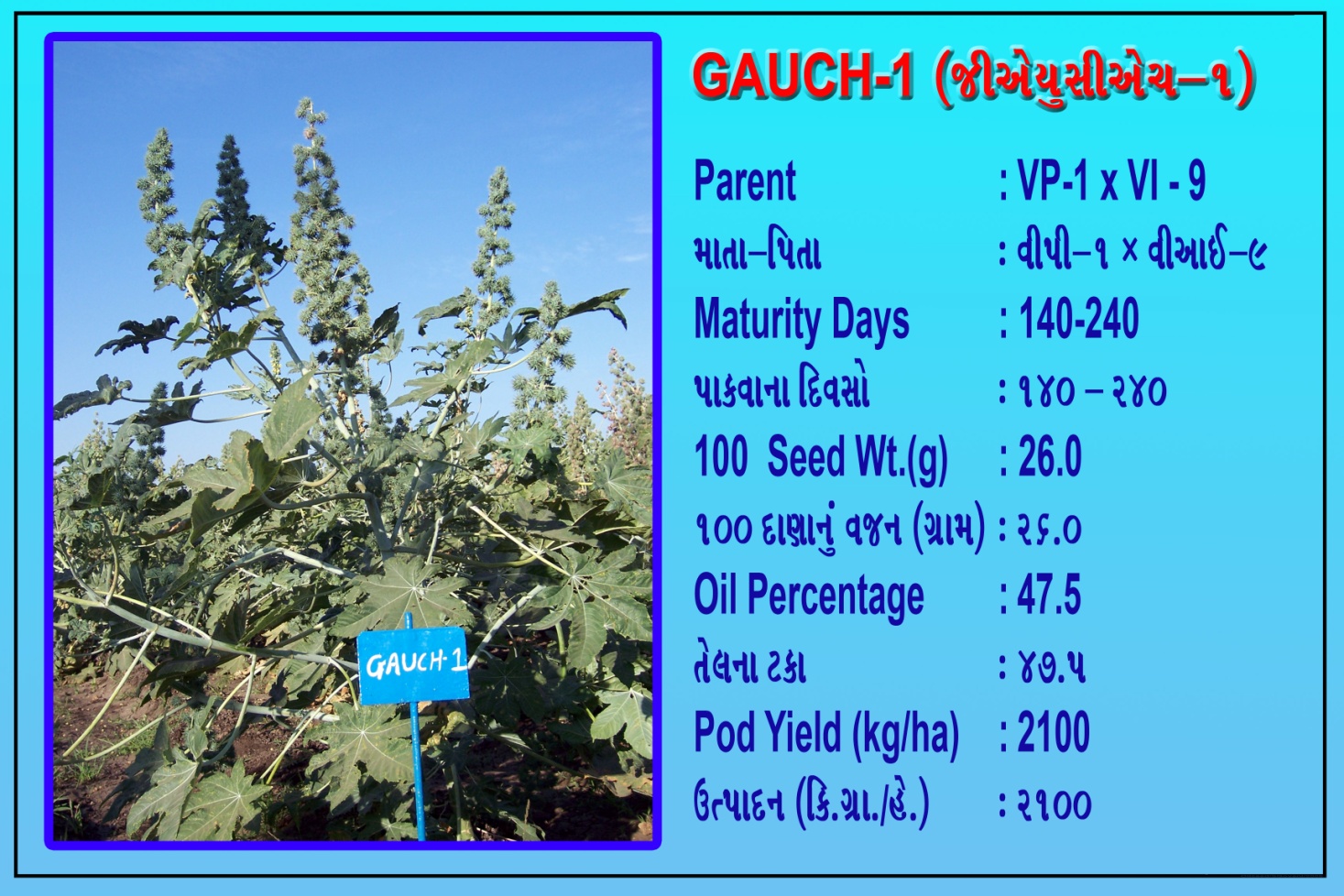 |
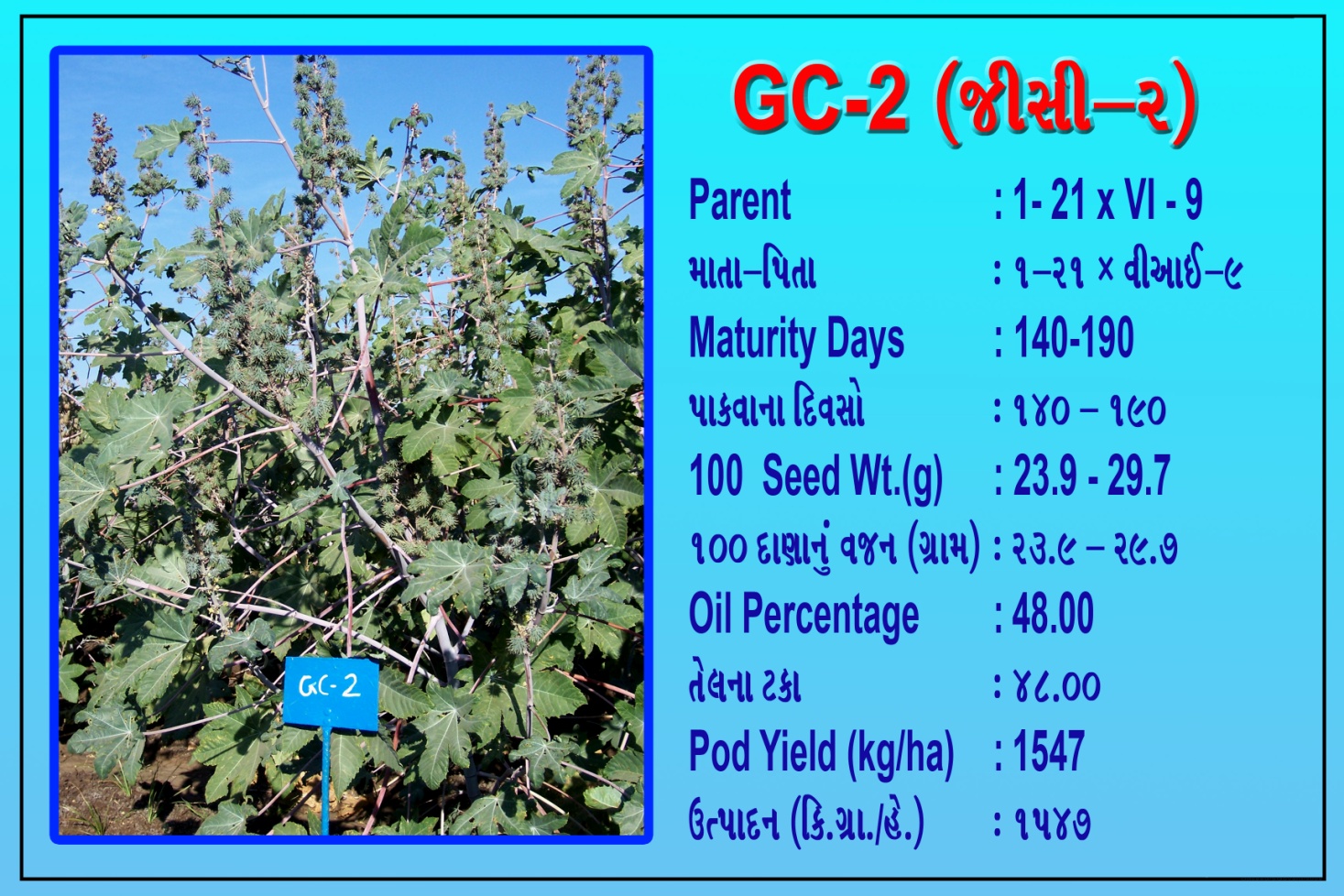 |
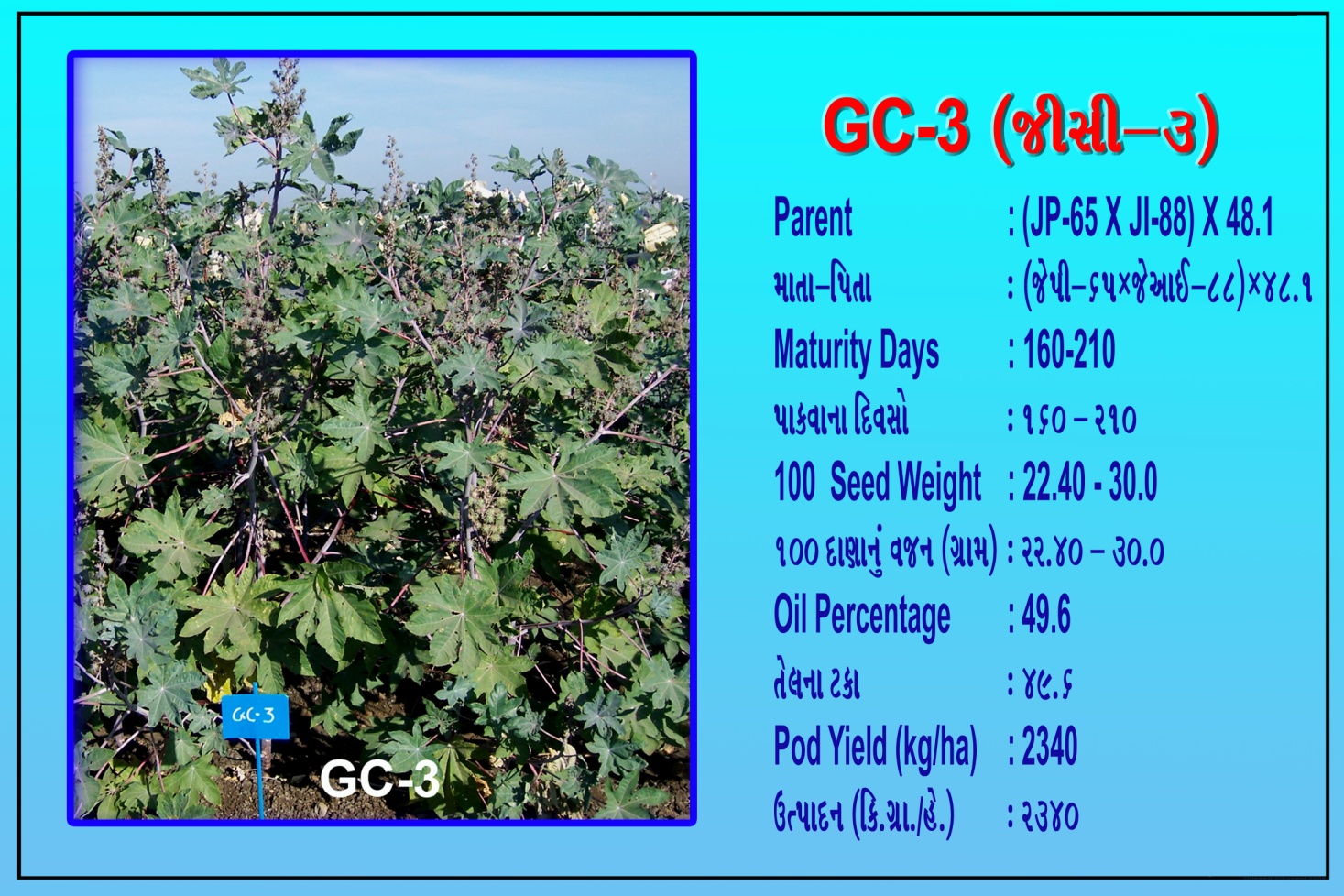 |
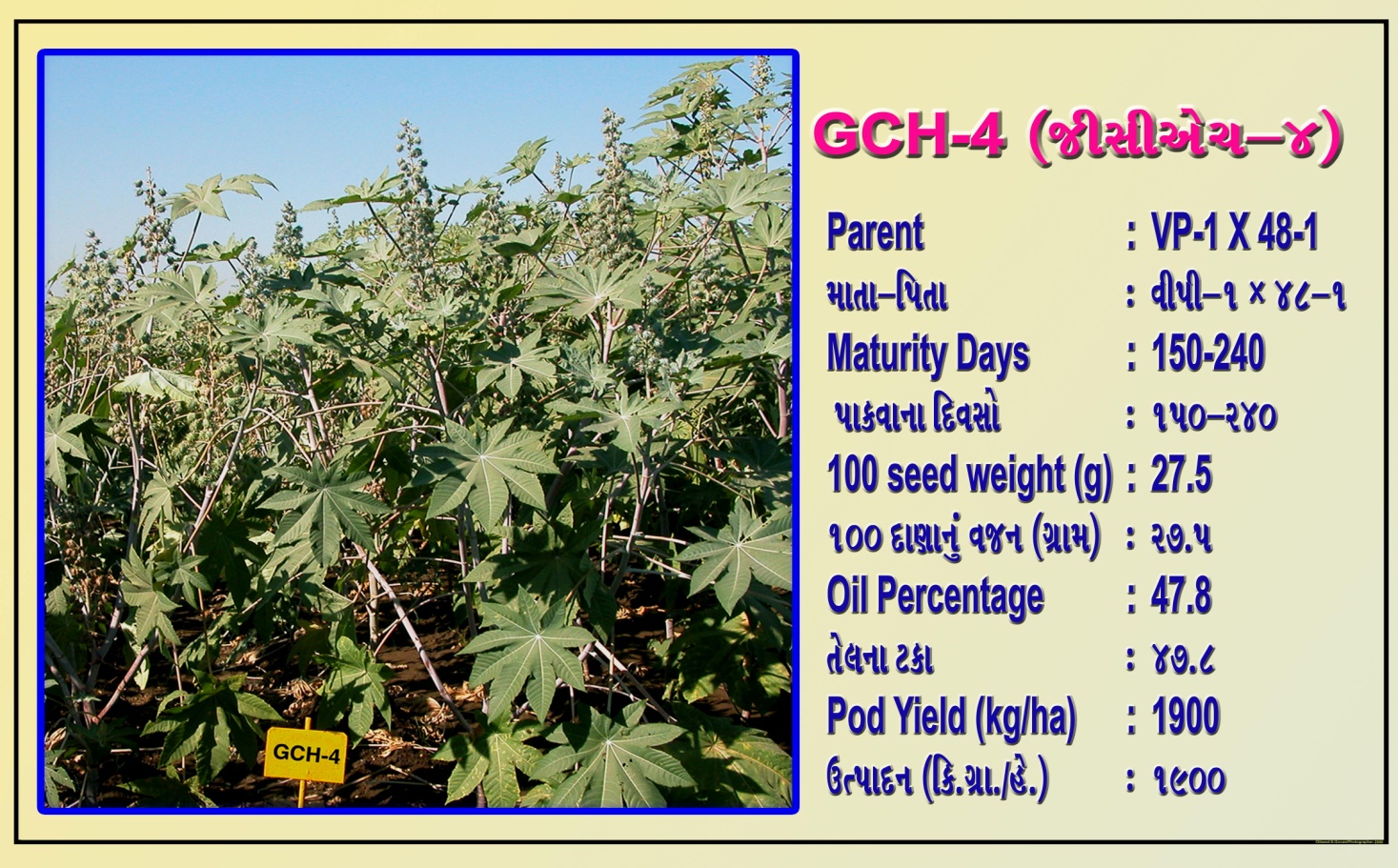 |
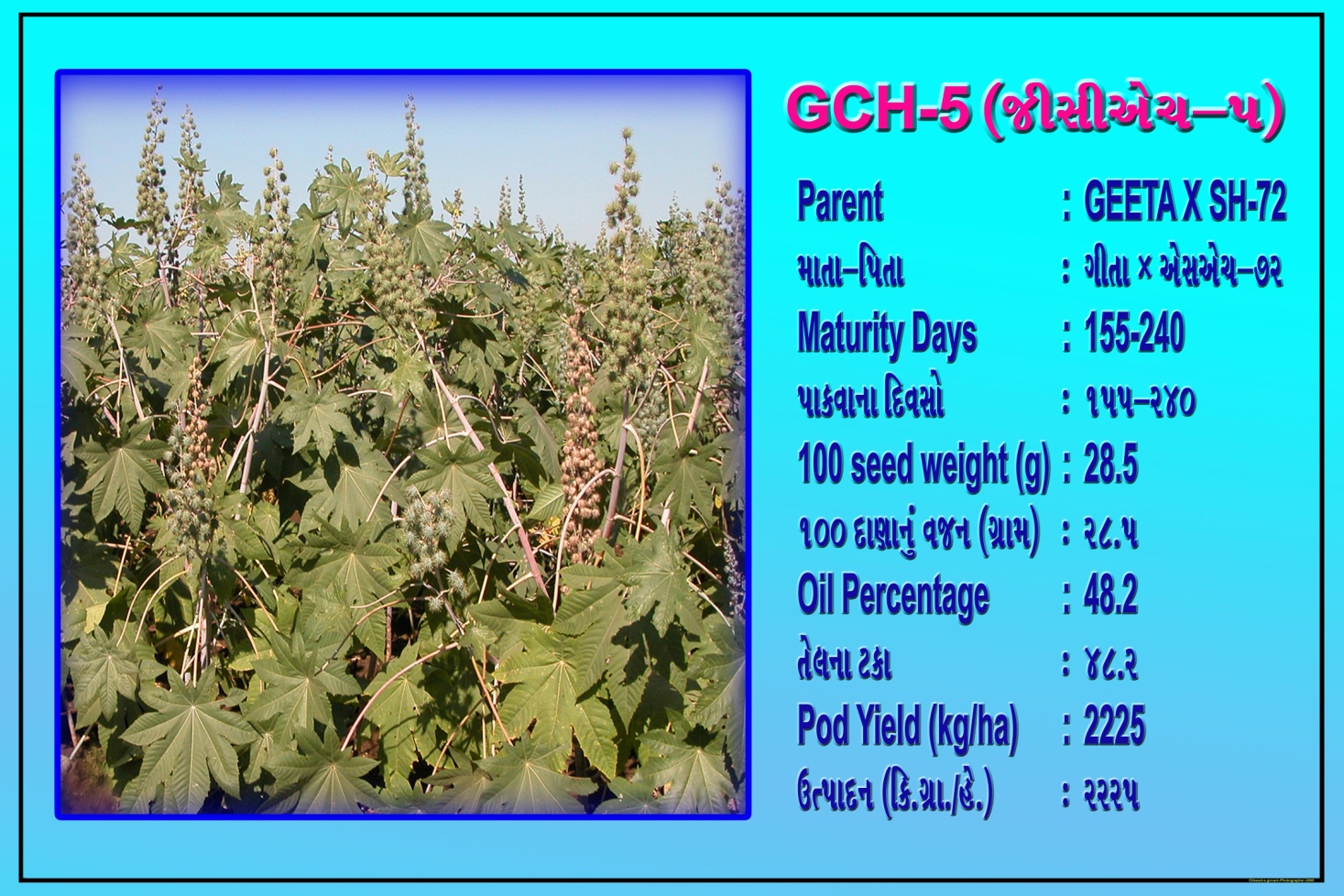 |
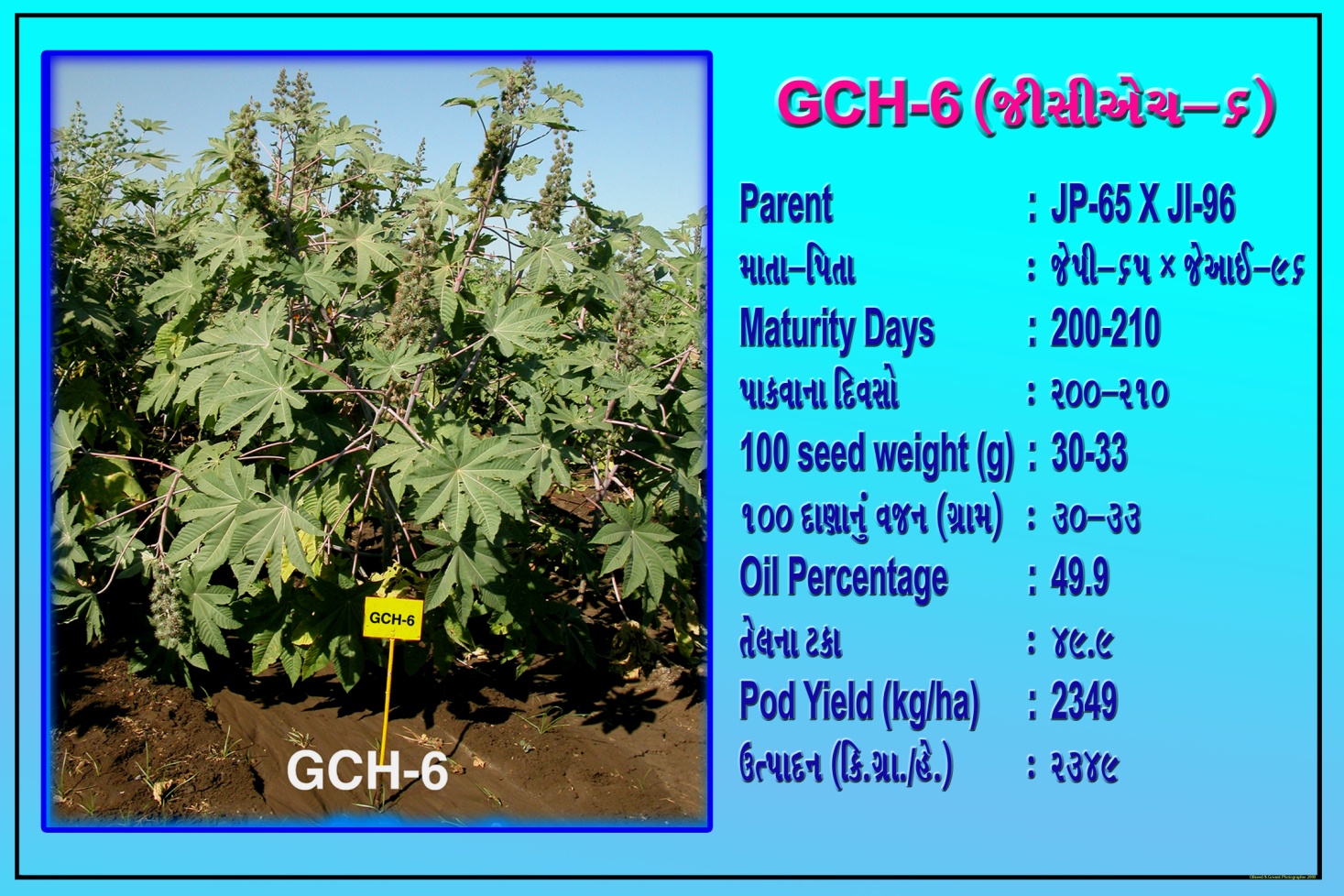 |
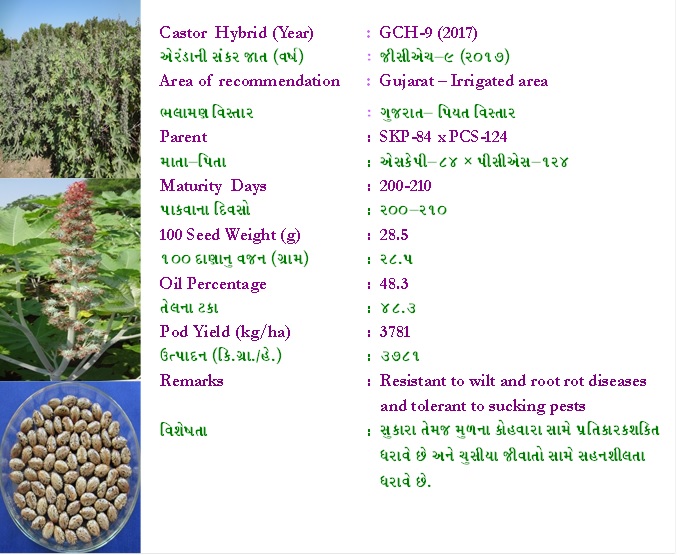 |
|